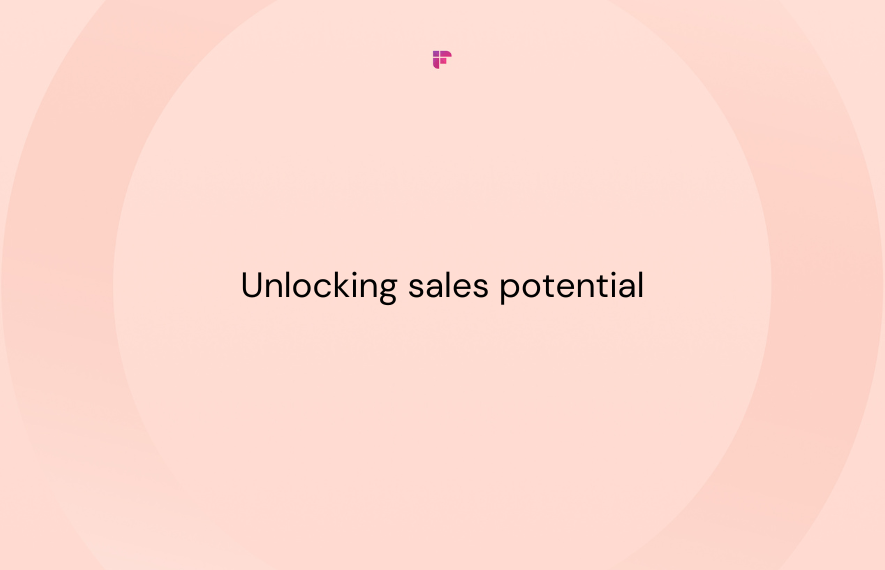Sales and sports have one thing in common: game tapes.
While most teams follow the same play, it is the individual player who brings their twists to gain an advantage over the opponent.
For example, in the NFL, receivers often fiddle with their gloves moments before the passing play is called. Or, some running backs scan the field as soon as they are about to run the ball.
It's the same with sales too. Game tapes can bring out your best by helping you review your calls and identifying critical signals from the buyers that can help you achieve your On-Target Earnings (OTE).
But reviewing every call is overwhelming, considering a sales rep makes around 35 calls daily. That's why you need conversation intelligence solutions.
How is conversation intelligence useful for sales teams?
Imagine this: You're on a call with a prospect. It's a big account, and closing this would be great for your business. The first few meetings go well. You feel this is heading somewhere. Soon after, the prospect ghosts.
Sounds familiar?
What do you do in such cases? Most likely, go back to the script and previous calls to analyze them. But there are just so many. How do you prioritize?
Have you hit a dead end?
Perhaps not.
Enter conversation intelligence.
Conversation intelligence software like Fireflies helps you analyze calls to find out the reasons you lost the deal, how you can prevent it, and achieve your quotas.
Here are the insights you can see with conversation intelligence:

1. Listen to your prospects to close deals
“Selling is like tennis… as long as the ball is in the other person’s court, you cannot lose.”
It makes sense. Customers want to be heard. According to a HubSpot, 69% of buyers want sales reps to "listen to my needs" to improve the sales experience.
Shoehorning in your product and ignoring your prospect's needs leaves no room for collaboration. Conversation intelligence tools build rapport and trust by removing the guesswork of knowing if you are talking more or less.
According to Salesloft, the average B2B sales rep' talks-to-listen ratio is 65:35, and the recommended is 43:57. But this can vary depending on the type of the sales call.
For example, it is natural to talk more if you are demonstrating the product. But during discovery calls, it is best to let the prospect do most of the talking.
Conversation intelligence lets you find your ideal talk vs. listen ratio so you can close more business.
2. Leverage silence for effective persuasion
Silence is an effective persuasion tool.
Knowing when to be silent can be advantageous. For example, staying silent after suggesting your final proposal can increase your chances of knowing what your prospects think and revealing their genuine intentions.
That's because even though silence can seem uncomfortable, it encourages the prospect to lead the conversation and you to stand your ground.
Use conversation intelligence software to identify if longer silence duration is helping you negotiate better or making the conversation awkward.
3. Turn monologues into conversations
It can be tempting to talk at a stretch about your product. But for all you know, the prospect might have already lost interest.
Research shows that the average attention span of a listener drops to its lowest 10 minutes into a monologue.
Is it the same with your prospects, too? Are your monologues impacting the call's outcome?
Fireflies has the answer. It provides insights into how many monologues you had during the call and for how long.
By tracking this behavior, you can ask specific questions and use anecdotes tailored to a prospect's pain points to turn sales monologues into dialogues and prospects into customers.
4. Understand how prospects feel on calls
Can we skip to the good part? Yes, with conversation intelligence, you can.
Conversation intelligence for sales transcribes your calls for positive, negative, or neutral sentiments. You can filter conversations based on sentiments to understand what resonated with the buyer.
Based on this data, you can modify your script and prioritize leads with higher positive sentiments to follow up and convert them into customers.
Send prospects with neutral or negative sentiments to the marketing team for further nurturing. You can build a pipeline with more buyer-ready prospects and achieve your OTEs.

5. Use questions to discover buyer-readiness
Asking incisive questions is essential for a successful sale. These questions can help you:
- Understand if the prospect is ready to purchase
- Demonstrate your expertise
- Discover the prospect's buying process
Even though you might be asking questions, how do you know they resonate with your prospect? Sales consulting firm Brevet claims that a mere 13% of customers say that a salesperson can understand their needs.
You can see how many questions you asked during the meeting using Fireflies AI and Sentiment filters in Smart Search.
For example, you want to see all the questions prospects asked during the meeting. You can use the AI Filter and Speakers label to jump to those transcript sections.
You can further drill down questions based on the Sentiment Filter or custom topics in the Topic Tracker and review your hour-long call in minutes.
6. Be confident during calls
Often used to fill brief pauses during a conversation, filler words litter our conversations. The ums and the uhs don’t really add value, but often perform a function in our speech; they give us time to think.
Filler words also signal a lack of confidence and preparedness. And that’s not good for sales.
Know the average number of filler words used during conversations and try to bring this down to sound more confident while delivering sales pitches.

7. Identify your quirks
Be the Tom Brady of sales by identifying your unique quirks. Use conversation intelligence to track important topics or phrases and see how you respond to them.
For example, a prospect asks, "What's your final offer?" How do you handle this crucial question? Are your responses effective in pushing the lead further into the sales funnel?
Fireflies lets you track mentions of such words, including your competitors, pricing, objections, and features.
To track these words, add the main topic. Think of it as an umbrella term. Under that, add all the related keywords. Click Add. And that's it.
Fireflies will track these mentions for you to see and filter your transcript.
8. Total number of calls made
80% of sales require five follow-up calls. But in reality, 44% of salespeople give up after one follow-up call. That's not the best approach if you want to hit your OTEs.
On average, it takes 18 calls to connect with a buyer. Are you making these calls? Track the total number of calls and average time spent in conversations using conversation intelligence.
Make a daily, weekly, or monthly comparison to see if there is a decline or increase in calls, and plan your calendar accordingly.
Final thoughts
Like in sports, everyone in sales has the same script, the same play. Yet, only a few hit their OTE.
Achieving OTEs is not a feat brought about by luck. It requires committing to constant improvement in your sales technique by leveraging tools like conversation intelligence that push you "'til your good is better, and your better is best."








